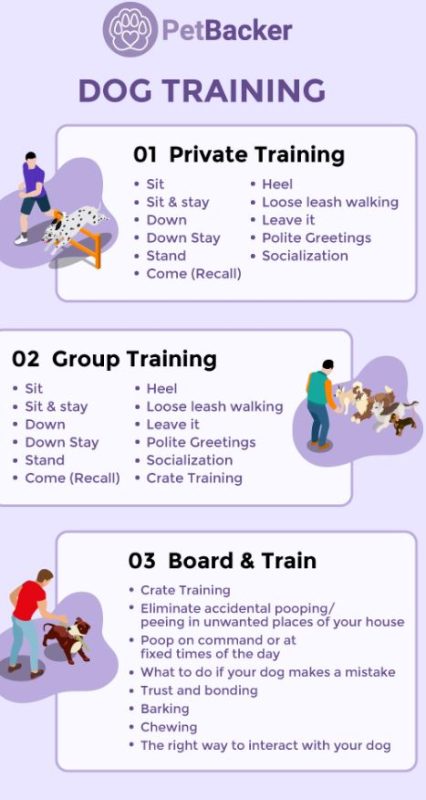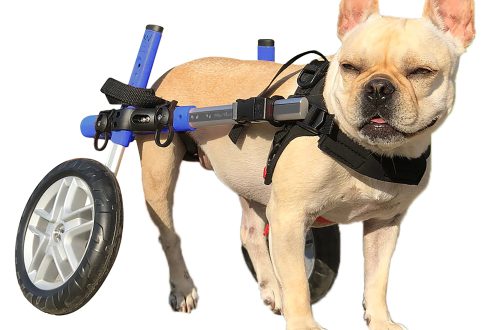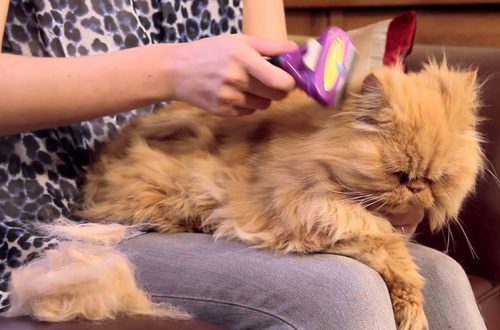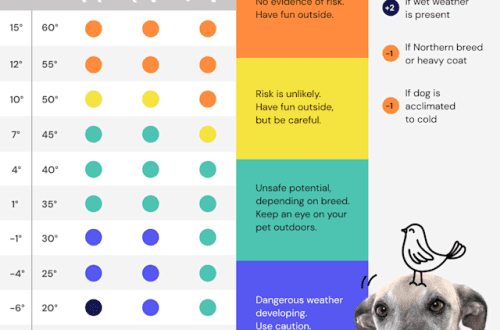
What is dog training and how is it different from training
Tells a professional cynologist – Maria Tselenko.
Training is teaching a dog certain commands. Including very complex command cycles required in various professional fields.
Education is a broader concept. The purpose of education is to instill socially acceptable behavior in the dog.
Throughout life, a dog may encounter various conditions, get into various situations, and the task of the owner is to explain to the pet how to behave correctly. At the same time, teaching commands greatly helps in raising a dog.
The essence of education is not to teach the dog to follow your commands, but to teach it to behave in a certain way in any situation. In fact, the situation itself will be a command for the dog.
The basic principle of education is to prevent or stop wrong behavior and encourage the right one. As an encouragement, there can be a voice praise, and a treat is better.
Often the owners want to punish the dog in order to convey to it the unacceptability of any behavior. But punishment doesn’t work with dogs like it does with people. Because we cannot explain to them in words what exactly caused our anger. The pet may associate your reaction not with their own behavior, but with another factor. Any punishment in the form of physical impact on the pet, first of all, will cause him negative associations with you.
If you see unwanted behavior, you can stop the dog with a stern voice. It’s enough.
The training process will not only teach the dog acceptable behavior in the house and on the street, but also help shape the relationship between the pet, the owner and other family members.
The dog will learn the characters of your family members and build an individual relationship with each.
It is important to control the interaction of the dog and, for example, children. An adult owner must ensure that the interaction is comfortable for both parties, direct and stop in time if someone diverges.
Punishment, screaming and rudeness will not help earn respect for your pet. He will simply start to be afraid of you and avoid you, but due to problems of mutual understanding, he can “naughty” even more.
You can build a relationship with a dog only through proper handling of it, consistent education, joint active walks, and mutual understanding. Do not underestimate the importance of emotional contact and joint pastime of the owner and pet.
To train a dog, you do not need to play the leader and lay the dog on the shoulder blades. This theory is outdated. But you need to methodically shape and reward the dog’s desired behavior.
Good relationships and understanding with all family members are very important for the normal functioning of your pet’s nervous system. A dog needs affection, praise and care. But she also needs periods of rest during which she will not be disturbed.
Only night rest for dogs is not enough. They need to sleep 16-19 hours a day.
Agree with family members about the same rules for the dog. For example, that a dog should not be given anything from the table. That they turn away from her if she jumps on you when they meet. Or that everyone in the house hides shoes from the puppy. Create unambiguous rules. If yesterday you taught your dog to lie still during your lunch, and today you gave him a piece of your meal while she was begging in the kitchen, your pet will never understand how to behave. Be consistent in your upbringing.
Be sure to agree with the whole family what dog behavior is unacceptable in your home. First of all, try to make misbehavior impossible. For example, so that the pet does not chew on the wires, they should be hidden in a special box. Don’t leave food unattended on the table so your dog doesn’t develop the habit of trying his luck. In addition, there are special exercises that teach the dog not to steal food. If you see that the dog is only reaching for food, shout something to distract him. After that, you should tell the pet what is the best thing to do. For example, send him to rest in place. If the pet managed to steal something from the table, your reaction will not work, even if only a few seconds have passed.
Beating a dog is unacceptable.
This will not bring the slightest benefit, and in the worst case, it will injure the psyche of your pet. It seems to owners that such punishment works, because at the moment of punishment, unwanted behavior stops. And it seems to many that the dog looks guilty and is aware of his guilt. But what people perceive as a guilty species is just an attempt by a dog to calm you down with signals of reconciliation and submission. However, she may not understand the reason for your anger at all. Some dogs will turn to self-defense and retaliatory aggression in response to your actions.
You don’t have to teach your dog how to fight with you. Contrary to the advice to be stronger – be wiser.
Think about how you can limit the dog from wrong behavior and how to train him to do the right thing. If you do not have enough knowledge – contact a specialist.
Never forget to praise your dog, your praise is very important for a pet. A strong motivator in education is a treat. In order for the dog to associate the treat with a certain behavior, you need to use a special marker. This is the signal that the dog has been trained to associate with reward. The signal can be a special device – a clicker or a specific word.
The chain is as follows: the dog complied with the command – the marker sounded – you gave her a treat.
Do not forget to praise the dog with a joyful voice. Positive emotions are an important part of relationships.
Each family has its own standards of behavior and requirements for a pet. But there are basic points necessary in the upbringing of every dog, regardless of breed.
Many owners do not want their puppy to play with their hands. If you are not against such games, then you should teach the puppy to end the game when you say. Some puppies have to be taught not to chase their feet and play with more suitable toys.
Teach your dog not to jump on you or other people when they meet you. Yes, this is how a dog expresses joy, but not everyone will appreciate such a greeting. If you really like it when the dog puts its paws on you, teach it to do it on command.
Teach your dog not to show excessive interest in passers-by on the street. If a dog runs up to strangers, flatters, gets in the way, and even more so jumps, there is nothing good in this. Moreover, many people are afraid of dogs and do not approve of such joyful gestures. Even if some passer-by does not mind that the puppy puts its paws on it in dry weather, another day the dog can get it dirty.
The dog should not run away from the owner, run after cats, joggers, cyclists or cars.
In the house, the dog should calmly wait for the owners to return, not spoil the furniture, shoes and other things. She should not gnaw wires, jump on the table (someone forbids dogs to jump on the bed as well), bark for no reason, beg and steal food, make noise and howl at night.
In the case of natural needs, everything is also individual. Most dogs need to be trained to go to the toilet outside. To withstand the interval between two walks a day, many dogs can only after 1 year. But some owners of medium-sized dogs do not want the dog to endure for a long time, waiting for them to return from work. In this case, you can teach the dog to relieve himself in a special place in the apartment, for example, on a diaper.
If a dog accustomed to walking suddenly begins to go to the toilet at home, you should think about her health.
Puppies should also be taught to a diaper or tray. If the baby missed, you must treat the case with understanding. He, like a small child, could play too much and not have time to run to the diaper. In no case do not scold the puppy for this. This is not even a punishment, but a mockery.
A well-bred dog should go through at least basic training. You can start training your dog by teaching him a name. The nickname will always help you attract the attention of a pet. To do this, you need to associate the nickname with what is significant for the dog. For example, call your dog before handing him a treat or a toy.
Your pet must know commands such as:
● “Phew!”
● “Come to me!”
● “Place!”
● “Nearby!”
When teaching your dog basic commands, don’t use one of them for all occasions. For example, if you are teaching a dog that the command is “phew!” is a prohibition to pick up food from the ground, this command will not work to prevent other unwanted actions. During a walk, the dog could grab a bone lying on the ground and, on command, “Phew!” spit it out. But having heard this command while chasing a cat, she most likely will not understand what she should do: after all, she has nothing in her mouth and nothing to spit out.
Initially commands mean nothing to the dog. The dog learns their meaning in the process of learning.
Do not forget that upbringing is not just the execution of the owner’s commands by the dog, but the norms of behavior that ensure the comfort and safety of the pet itself and everyone around it. Your task is to show your pet that all your actions are aimed at taking care of him. That he is loved and fed, his health is protected. Good luck and patience to you in this serious matter!





